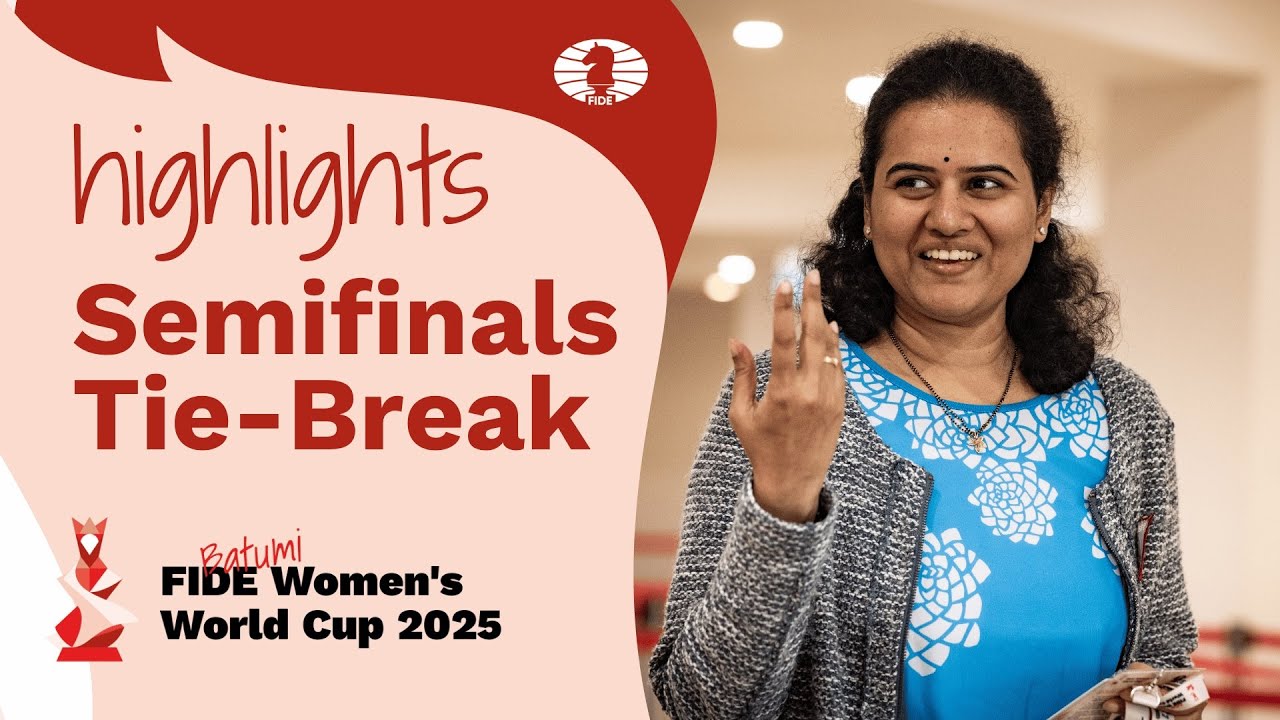The highly anticipated 2025 FIDE Women`s Chess World Cup final has delivered a dramatic stalemate. Two of India`s most formidable chess minds, veteran Grandmaster Koneru Humpy and rising star Divya Deshmukh, have concluded their classical games in a draw, setting the stage for exhilarating tiebreakers. The prestigious title now hangs precariously, promising a definitive, high-stakes conclusion to a tournament already rich with compelling narratives.
The Classical Confrontation: A Strategic Stalemate Unfolds
The final match between Koneru Humpy, a stalwart of women`s chess, and Divya Deshmukh, a dynamic prodigy, has been a testament to both strategic depth and unwavering resolve. In Game 1, Deshmukh, wielding the white pieces, navigated the opening to achieve a promising position. Yet, as is often the cruel reality in top-tier chess, converting a nuanced advantage into a decisive win proved elusive. Her candid post-game reflections highlighted the internal struggle: “I saw everything and I just always ended up making the wrong choice,” a sentiment familiar to any competitor who has ever meticulously analyzed a missed opportunity. This self-critical examination, while painful, is a hallmark of elite players constantly striving for perfection.
Game 2, with Humpy playing White, offered a different strategic challenge. Humpy employed a Queen pawn opening, skillfully developing her pieces to gain an optical edge, particularly with her bishop pair. However, Deshmukh`s precise defensive play and judicious knight placement effectively neutralized Humpy`s potential threats. The game saw a gradual reduction of material, with rooks and minor pieces being exchanged, leading to a queen-and-minor-piece endgame. Humpy attempted to create complications with a pawn sacrifice, but Divya`s robust defense ensured that the position remained balanced. Ultimately, Humpy recovered the pawn, and Deshmukh shrewdly repeated the position through a series of checks, leading to a draw after just 34 moves. The result underscored the tactical parity and defensive resilience exhibited by both players.
The Crucible of Time: Understanding the Tiebreaker Format
With the classical games ending in a 1-1 deadlock, the championship will now be decided through a series of rapid and blitz tiebreakers. This format shifts the emphasis from meticulous, unhurried calculation to swift decision-making and acute intuition under immense time pressure. It is a sprint after a marathon, demanding not just chess skill but profound mental fortitude.
The progression of the tiebreakers is structured to ensure a definitive winner emerges, escalating in pace and intensity:
- First Round (Rapid): Two games, with each player receiving 15 minutes plus a 10-second increment per move. This allows for thoughtful play, but still significantly less time than classical games.
- Second Round (Rapid): Should the score remain tied, another two games are played. The time control tightens to 10 minutes per player, with a 10-second increment per move.
- Blitz Rounds: If the deadlock persists, the players move into true blitz territory. Two games are contested with a mere 5 minutes per player and a 3-second increment per move. Errors are more prevalent here, and the ability to adapt quickly becomes paramount.
- Final Showdown (If Necessary): As a last resort, if all previous rounds fail to produce a winner, a final set of two games will be played under a 3-minute time control, with a 2-second increment per move. This is the ultimate test of nerve and quick-fire accuracy, often leading to dramatic and unforgettable conclusions.
A Defining Moment for Indian Chess
The presence of two Indian Grandmasters in the FIDE Women`s Chess World Cup final is a significant milestone, reflecting the burgeoning strength of Indian chess on the global stage. Koneru Humpy, with her vast experience and consistent performance, epitomizes the established excellence within the sport. Divya Deshmukh, on the other hand, represents the vibrant future, showcasing the bold and dynamic style of the new generation of players. Their battle is not just for a title; it is a clear indicator of the depth of talent emerging from the land where chess originated.
As the tiebreakers commence, the chess world watches with bated breath. Will the seasoned wisdom of Humpy prevail, or will the ambitious charge of Deshmukh claim the ultimate prize? Regardless of the eventual victor, this final has already cemented its place in chess history as a compelling display of strategic brilliance, resilience under pressure, and the unyielding spirit of competition.

